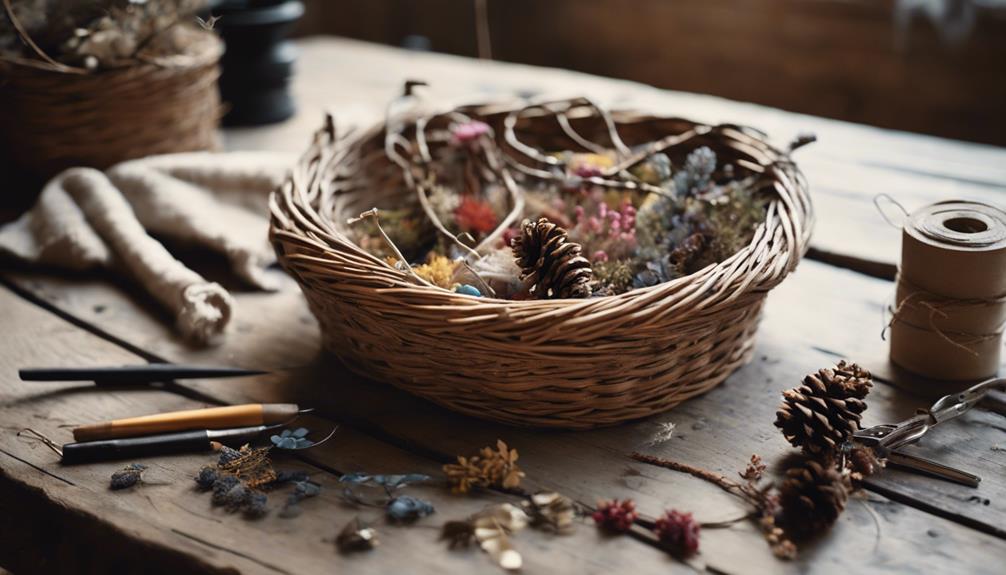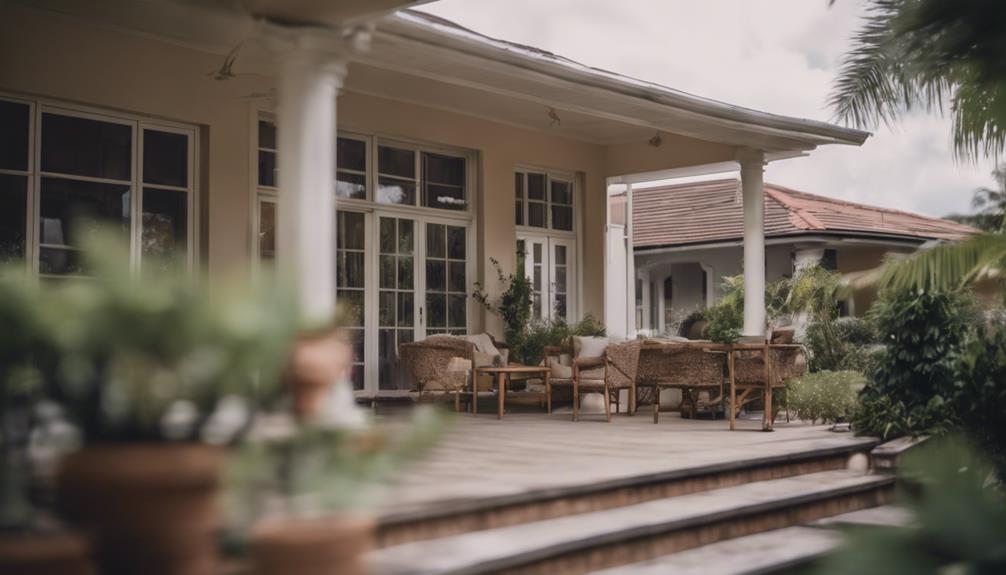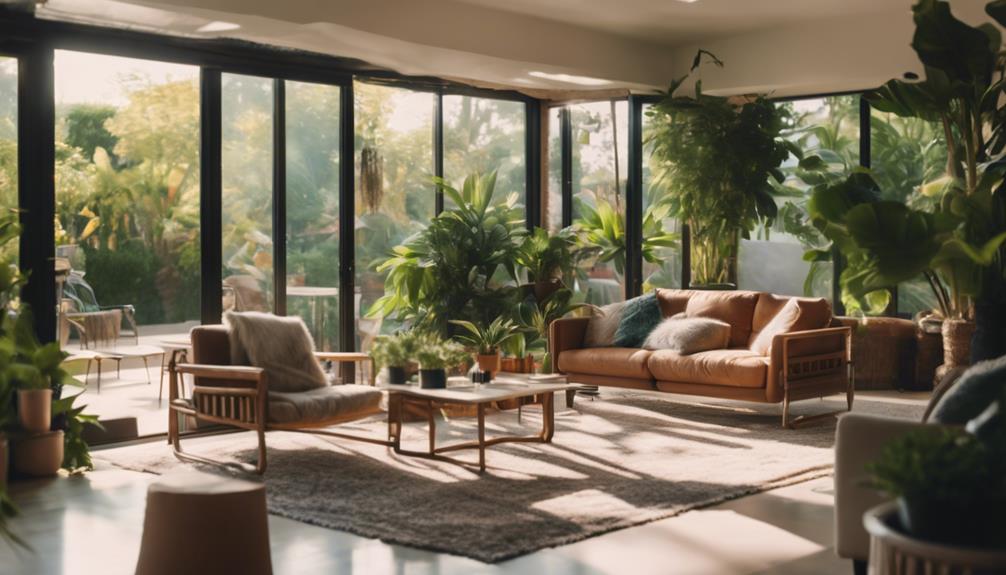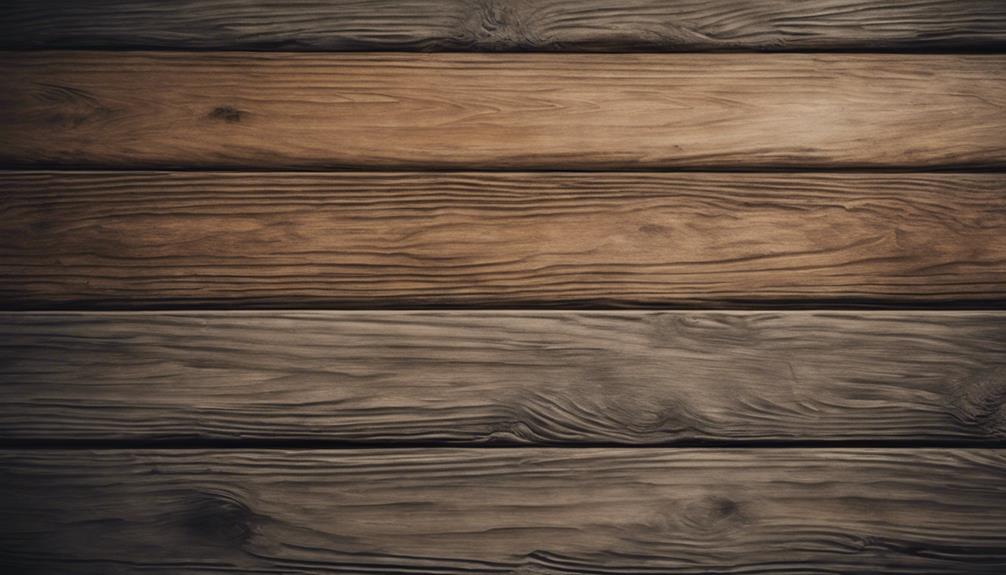To craft a homemade bird nest, start by gathering natural materials like dried grass, twigs, and leaves from your yard or local parks. Next, mold the nest shape by wrapping angel hair vine filler around a bowl, securing it with thin wire. Finally, add decorative elements like feathers, dried flowers, or small twigs to enhance the natural look. Personalize your nest with ribbons, fabric scraps, or small ornaments to make it unique. With these three simple steps, you'll have a natural haven for birds and a stunning decorative piece for your home – and that's just the beginning of your creative journey.
Key Takeaways
• Gather natural materials like dried grass, twigs, and Spanish moss to mimic the bird's natural environment.
• Create a nest structure by wrapping angel hair vine filler around a bowl and securing it with thin wire.
• Add decorative elements like Easter eggs, feathers, and dried flowers to enhance the natural look.
• Personalize your bird nest with ribbons, fabric scraps, or small ornaments to make it unique.
• Experiment with different elements to unleash your creativity and make your DIY project special.
Gathering Natural Materials
Head outdoors to scour your yard, local parks, or online retailers for natural materials like dried grass, twigs, leaves, and Spanish moss that will give your DIY bird nest an authentic look. This is the first step in making a homemade bird nest that will attract birds to your backyard.
You'll want to gather materials that mimic the natural environment, allowing your DIY nest to blend in seamlessly. As you forage for materials, keep in mind the type of bird you're trying to attract, as different species have unique nesting preferences.
Once you've collected your materials, prepare your workspace by covering it with craft paper, wearing gloves, and working in a well-ventilated area to prevent mess. With your materials and workspace ready, you'll be set to start crafting your DIY bird nest, making it an inviting home for your feathered friends.
Crafting the Nest Structure
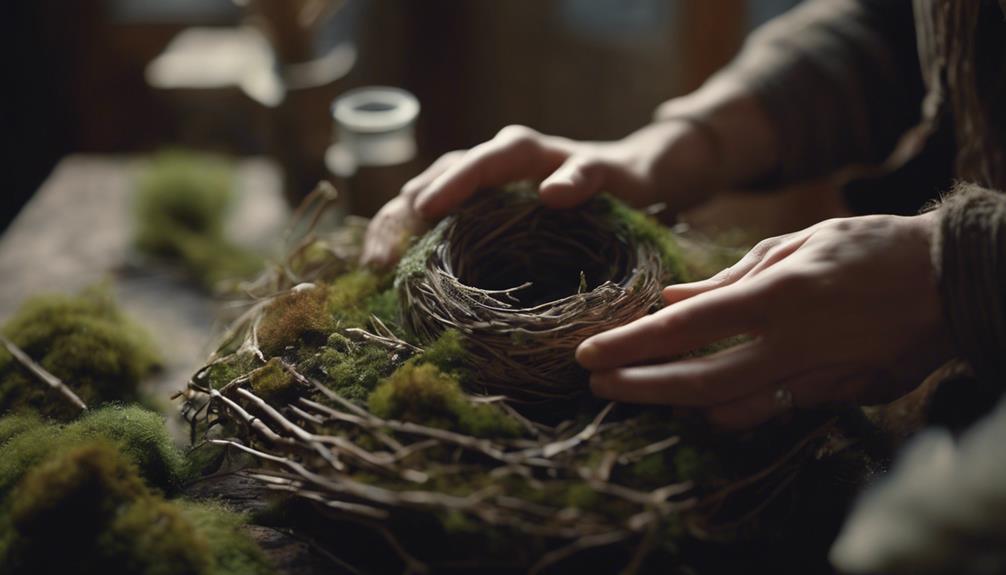
With your natural materials and workspace prepared, you're ready to start crafting the nest structure, the foundation of your DIY bird nest. This is the most essential step in creating a realistic bird nest, as it provides the base shape and form of the nest.
To craft the nest structure, follow these steps:
- Wrap the angel hair vine filler around a bowl to mold the nest shape, using thin wire to secure it in place.
- Continue wrapping the vine filler around the bowl, overlapping the layers to create a sturdy base.
- Secure the sides of the nest together using thin wire, and trim any excess filler.
- Once the nest is formed, carefully remove it from the bowl.
Adding Final Touches
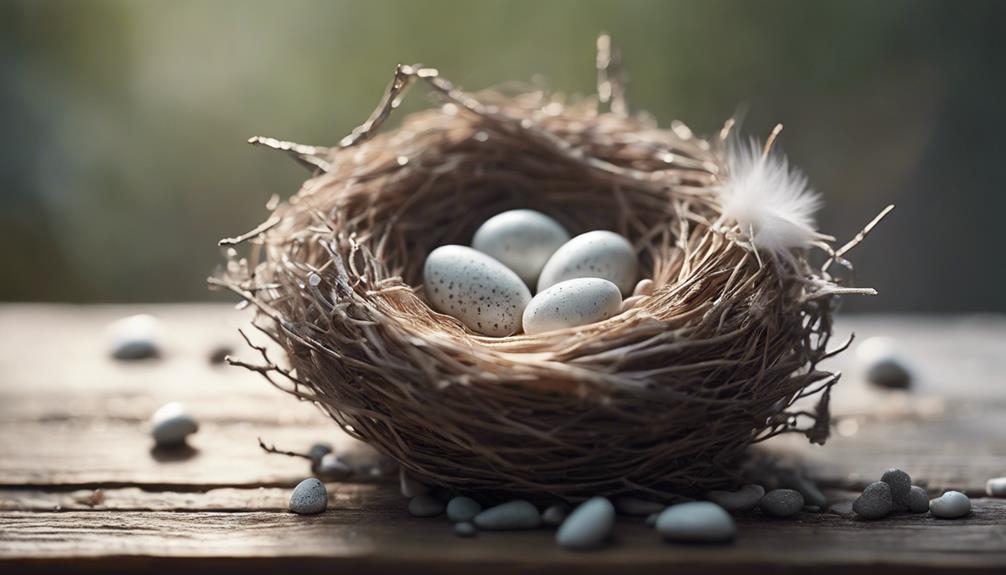
You can now add the perfect finishing touches to your DIY bird nest by incorporating decorative elements that reflect your personal style and flair.
Add a pop of color and texture to your bird nest with decorative Easter eggs or faux bird eggs, which can be easily attached using a hot glue gun.
To enhance the natural look of your nest, incorporate feathers, dried flowers, or small twigs, which will add a touch of whimsy and authenticity to your decoration.
Consider adding a miniature nest or a tiny bird figurine to create a charming and unique centerpiece.
Experiment with different elements like ribbons, fabric scraps, or small ornaments to personalize and customize your bird nest decoration.
Don't be afraid to get creative and try out new ideas – after all, customization is what makes your DIY project truly special.
Frequently Asked Questions
How to Build a Bird Nest Step by Step?
When you're wondering how to build a bird nest step by step, start by gathering natural materials like twigs, grass, and feathers for an authentic look.
Next, use a bowl as a mold to shape the nest and hold it together with thin wire.
How to Make a Craft Nest for Kids?
When you're looking to make a craft nest for kids, start by gathering materials like construction paper, glue, a bowl, and a paintbrush.
Cut the paper into strips and layer them inside the bowl, coated with a glue and water mixture.
Encourage kids to experiment with different colors and textures to create a unique nest, adding details like eggs or birds for a realistic touch.
How Do Birds Build Nests for Kids?
You might wonder how birds build their nests, and it's fascinating to learn about their unique techniques. Birds collect materials like twigs, leaves, and mud, carefully arranging them to create a safe space for their eggs.
Some species weave intricate nests, while others dig simple depressions in the ground. By observing birds build nests, you'll appreciate their remarkable resourcefulness and adaptability in using their surroundings to create homes.
How to Make Birds Nest With Paper?
Are you curious about how to make a bird's nest with paper? You're in luck!
To create a realistic bird's nest, you'll need to cut paper strips about 1/4 inch thick, mix Elmer's glue with water, and arrange the strips criss-crossing inside a bowl lined with plastic wrap.
You can experiment with different colors and textures of paper to create a unique design.
Conclusion
As you carefully place the final twig, your homemade bird nest begins to resemble a cozy little home, a tribute to nature's intricate design.
Like a master weaver, you've intertwined twigs, leaves, and feathers to create a snug sanctuary, a symbol of hope and new life.
Just as the nest cradles its precious cargo, your creativity has given birth to something beautiful, a reminder that even the smallest acts of craftsmanship can hold profound significance.
